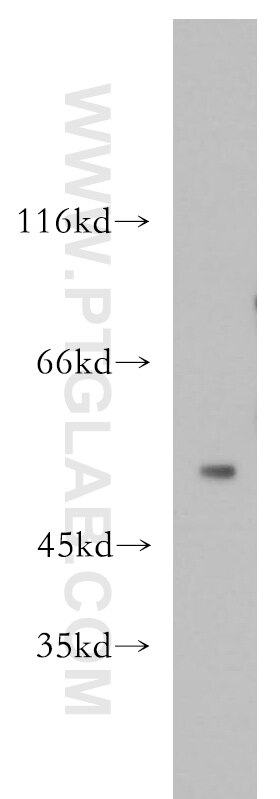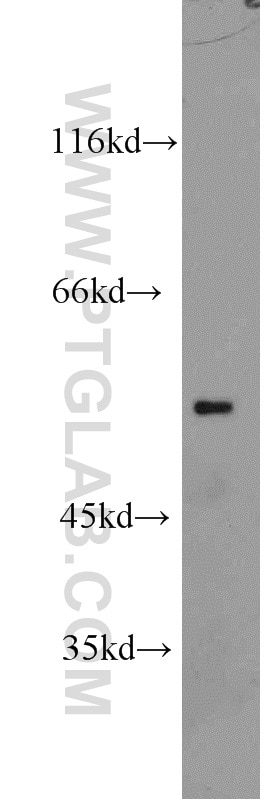Anticorps Polyclonal de lapin anti-GPR142
GPR142 Polyclonal Antibody for WB, ELISA
Hôte / Isotype
Lapin / IgG
Réactivité testée
Humain
Applications
WB, ELISA
Conjugaison
Non conjugué
N° de cat : 18820-1-AP
Synonymes
Galerie de données de validation
Applications testées
| Résultats positifs en WB | cellules SH-SY5Y |
Dilution recommandée
| Application | Dilution |
|---|---|
| Western Blot (WB) | WB : 1:500-1:1000 |
| It is recommended that this reagent should be titrated in each testing system to obtain optimal results. | |
| Sample-dependent, check data in validation data gallery | |
Applications publiées
| WB | See 1 publications below |
Informations sur le produit
18820-1-AP cible GPR142 dans les applications de WB, ELISA et montre une réactivité avec des échantillons Humain
| Réactivité | Humain |
| Hôte / Isotype | Lapin / IgG |
| Clonalité | Polyclonal |
| Type | Anticorps |
| Immunogène | Peptide |
| Nom complet | G protein-coupled receptor 142 |
| Masse moléculaire calculée | 462 aa, 51 kDa |
| Poids moléculaire observé | 51-55 kDa |
| Numéro d’acquisition GenBank | BC152987 |
| Symbole du gène | GPR142 |
| Identification du gène (NCBI) | 350383 |
| Conjugaison | Non conjugué |
| Forme | Liquide |
| Méthode de purification | Purification par affinité contre l'antigène |
| Tampon de stockage | PBS with 0.02% sodium azide and 50% glycerol |
| Conditions de stockage | Stocker à -20°C. Stable pendant un an après l'expédition. L'aliquotage n'est pas nécessaire pour le stockage à -20oC Les 20ul contiennent 0,1% de BSA. |
Informations générales
GPR142, also named as PGR2, belongs to the G-protein coupled receptor 1 family. It is an orphan receptor. This antibody recognizes the 51-kDa GRP142.
Protocole
| Product Specific Protocols | |
|---|---|
| WB protocol for GPR142 antibody 18820-1-AP | Download protocol |
| FC protocol for GPR142 antibody 18820-1-AP | Download protocol |
| Standard Protocols | |
|---|---|
| Click here to view our Standard Protocols |



